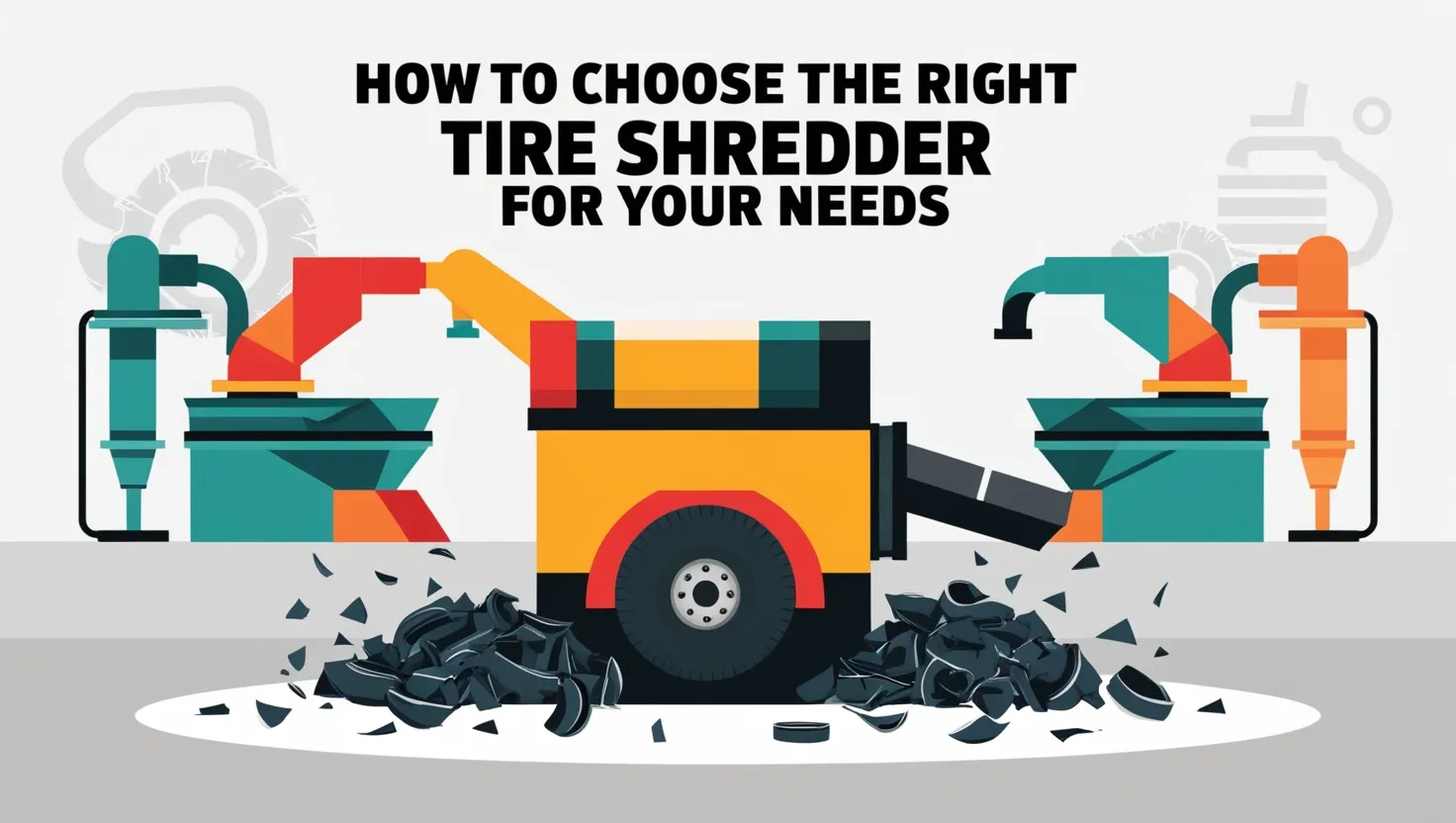When managing waste, recycling, or tire disposal, selecting the right tire shredder is a critical decision. With numerous models available on the market, pinpointing the best fit for your operations can feel overwhelming. Whether you need to process a small daily volume or handle large-scale industrial recycling, this comprehensive guide clarifies the essential factors to evaluate so you can make an informed choice.
Understanding Tire Shredders: What They Are and Why They Matter
A tire shredder is specialized equipment that breaks down whole tires into smaller, manageable pieces suitable for recycling or environmentally compliant disposal. These machines vary significantly in size, capacity, and output type. Choosing the right shredder optimizes operational efficiency, reduces costs, and supports sustainable waste processing.
Key Considerations When Selecting a Tire Shredder
1. Capacity and Daily Throughput
Assess your tire processing volume carefully. Tire shredders range from compact models suitable for smaller loads to heavy-duty machines capable of processing several tons per hour. High-capacity operations require robust shredders that sustain efficient throughput without frequent mechanical failures.
- How many tires do you need to shred daily?
- What is the typical size and weight of these tires?
2. Types of Tires You Process
Different tires present varied shredding challenges. While passenger car tires typically shred easily, truck, tractor, or off-road tires often contain metal belts and are tougher to process. Choose shredders with adjustable settings or multi-stage shredding for diverse tire types and sizes.
- Which tire types are in your recycling stream (passenger, truck, off-road)?
- Do these tires contain steel or fiber reinforcements?
3. Desired Output Size and Material Use
Your shredder’s output size should align with your recycling goals. Applications like tire-derived fuel require smaller, uniform particle sizes, while other uses may accept larger chunks.
- What is the intended application of your shredded material?
- How fine should the shredded pieces be?
4. Maintenance Needs and Machine Durability
Tire shredding is tough on equipment, so reliability and ease of maintenance are crucial. Machines constructed with wear-resistant materials, durable blades, and an accessible design for quick servicing lower downtime and long-term expenses.
- What is the expected operational lifespan?
- How frequently are maintenance interventions required?
5. Energy Efficiency to Control Operating Costs
Energy consumption is a large operational cost factor. Opt for shredders with energy-efficient motors and smart control systems that balance performance and power use.
- What is the shredder’s power consumption rate?
- Are there features designed to reduce energy consumption?
6. Safety Features for Operator Protection
Given the heavy-duty industrial nature of tire shredding, safety is paramount. Look for shredders equipped with emergency stops, safety guards, interlocks, and overloaded shutdown mechanisms complying with international safety standards.
- What safety protections does the shredder offer?
- Does it conform to relevant safety certifications?
7. Investment Cost and Return on Investment (ROI)
While cost is always a consideration, investing in high-quality, efficient equipment typically results in lower maintenance and operational costs over time, improving ROI.
- What is your budget range?
- How soon do you expect to recoup your investment?
Advantages of Choosing the Right Tire Shredder
By carefully aligning shredder specifications with your operational demands, you gain:
- Increased processing efficiency and consistency
- Reduced downtime and maintenance costs
- Enhanced safety for staff and facility
- Optimized energy consumption and environmental compliance
- Longevity and reliability that maximize your return on investment
Rumtoo’s Commitment to Your Tire Shredding Success
At Rumtoo, we understand the industrial recycling landscape. Our tire shredders are designed for durability, powerful performance, and energy efficiency, fully customizable to your unique processing needs. Partner with us to enhance your recycling capabilities and contribute to sustainable waste management practices.
Frequently Asked Questions (FAQ)
Q1: What types of tire shredders are available?
A1: Common types include single-shaft for uniform smaller volumes, dual-shaft for larger capacity and tougher tires, and quad-shaft shredders that offer versatility for diverse tire sizes and materials.
Q2: How important is blade quality?
A2: Blade material and durability directly impact shredder efficiency and maintenance intervals. High-quality, wear-resistant blades extend operational life and maintain cutting performance.
Q3: Can a shredder handle mixed tire types?
A3: Yes, shredders with adjustable settings or multi-stage designs accommodate different tire sizes and compositions, including steel-belted and off-road tires.
Q4: How can I estimate the right capacity?
A4: Calculate your average tire volume and weight per day, then select a shredder rated for slightly above that capacity to allow for growth and downtime.
Q5: Are safety certifications necessary?
A5: Absolutely. Certifications like CE, ISO, and ANSI ensure manufacturers meet strict safety and quality standards, protecting operators and equipment.



